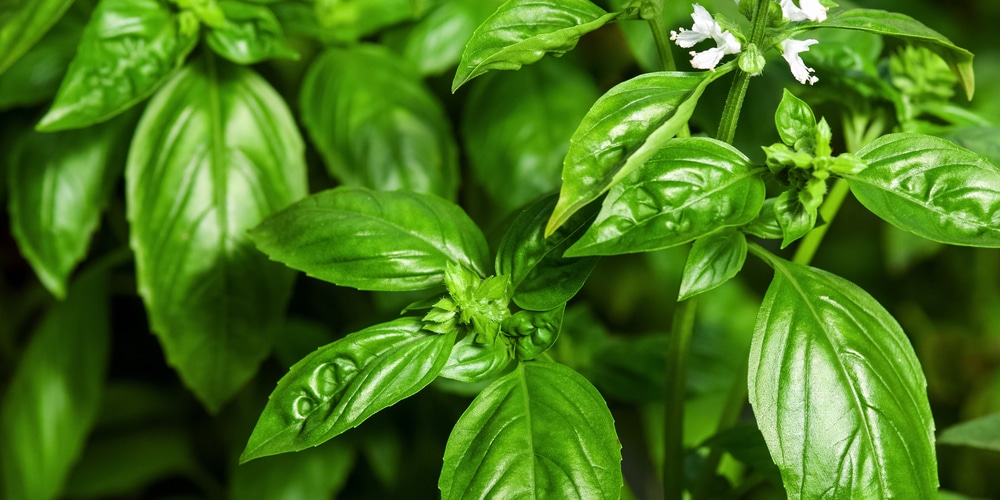Wouldn’t it be great if you could have your own supply of basil leaves in your garden or inside your house? Free basil for your pesto and other dishes is just one reason to grow your own basil plant. The king of herbs also makes a great display inside your house.
You can grow one in a small pot and its lush green leaves will give life to your dull interiors. When you grow the plant outdoors, it will repel pests and draw pollinators for your other plants because of its highly aromatic leaves. Growing basil is easy, but will this also be the case when you grow it in Arizona? Let’s find out!
The climate of Arizona

The state of Arizona is popular for its breathtaking desert landscape. While there are regions with cooler summers and colder winters, most of Arizona has a semiarid climate. This means that it’s dry and hot all year round in the Grand Canyon State.
Precipitation is little and usually happens in the summer. Phoenix only receives 8 inches of rain per year. The state has low humidity that can only go as high as 50%. Arizona is in USDA hardiness zones 5 to 10, which means that the winter temperature can only go as low as -20 degrees F.
The temperature in the state only varies from 40 degrees F to 105 degrees F. A temperature that is below 32 degrees F or above 110 degrees F is a rare event. It is mostly clear year-round in Arizona. In fact, Arizona is always on the list of the sunniest states in the USA.
How to grow basil in Arizona

Yes! It is possible to grow basil in Arizona. The plant will love the sunny and hot weather in the Grand Canyon State. Growing basil in Arizona is just the same as how you grow the plant anywhere in the US.
The only difference is that there is a much higher chance that the plant will come back after winter because of the warm temperatures that prevail all year round in Arizona.
Basil needs 6-8 hours of sunlight. If you live in an area with very hot summers, an afternoon shade will help protect the delicate leaves from the scorching heat of the sun. The soil must be high in organic matter and well-drained. Basil doesn’t like dry soil. Supply one inch of water weekly to provide moisture to the plant.
You can also do mulching to help retain moisture and keep weeds off. Pruning or harvesting is necessary and must be done often to encourage the plant to grow more. You can harvest leaves once the plant reaches 6 to 8 inches tall.
The dry conditions, little precipitation, and colder winters in some regions are problems you’ll encounter when growing basil in Arizona. Basil cannot tolerate dry conditions, and dry soil will give the basil leaves a bitter taste. It thrives the most when the soil is moist, so watering is needed regularly.
A little frost can immediately damage, or worse, kill the plant. Basil thrives in USDA hardiness zones 10 to 11. The lowest temperature that basil can tolerate is 30 degrees F. However, you don’t want to go that low because the plant thrives the most when the temperature is above 50 degrees F.
You can grow basil in Arizona outdoors if you live in USDA hardiness zones 10 to 11. Regions in zones 10 to 11 include Yuma, Willow Valley, Topock, Somerton, San Luis, Lake Havasu City, Gadsden, Fort Mojave, Desert Hills, and Ajo.
Basil varieties that grow well in Arizona

If you live in Arizona, where the soil is dry and summer afternoons are too hot, it is best to grow basil in pots. This way, you can easily relocate the plant when the winter in your region becomes too cold or the summer becomes too hot. Choosing the right variety is as important as providing the right growing conditions to ensure success in growing basil. Here are some basil varieties that can withstand the heat of Arizona.
1. Mrs. Burns lemon basil
The leaves of Mrs. Burns lemon basil are 10% bigger than the leaves of typical lemon basil. You can easily grow the plant from seeds. Start planting in late spring when night temperatures stay above 50 degrees F. The plant can tolerate dry soil, but like most basil, it will thrive when watered regularly. Provide plenty of sunlight for the basil. Pinch off growing tips when the plant becomes 6 inches tall.
2. Siam Queen
The Siam Queen Basil is known for its large emerald leaves and brilliant purple flowers. The leaves of this basil are commonly used in Thai dishes. They don’t have the sweet taste common to basil. The leaves of Siam Queen taste like licorice. The leaves smell and taste spicy. You can plant the seeds in the spring once the soil warms up.
3. African Blue
African Blue basil is also known as Clove Basil and African Basil. This basil is grown for its oil, which makes a great insect repellent. The oil can also be used in flavorings. The African Blue plant looks a little weedy, so you might want to trim the plant not only to encourage growth but also to make it look tidier. This basil cannot tolerate cold winters or too much moisture, which makes it perfect for Arizona.
Related Article: Basil Plant Flowering: Here’s Why